
Ramen Eggs (Ajitsuke Tamago)
Ramen Eggs (Ajitsuke Tamago or Ajitama) are delicious as a topping for ramen or enjoyed as a snack. Read on to learn how to make these flavorful Japanese soft-boiled eggs at home.
Ingredients
- 4 large eggs (50 g each w/o shell) (refrigerated; use slightly older eggs, which are easier to peel)
Instructions
- Before You Start: Please note that this recipe requires a marination time of 8 hours or overnight. Now, gather all the ingredients.
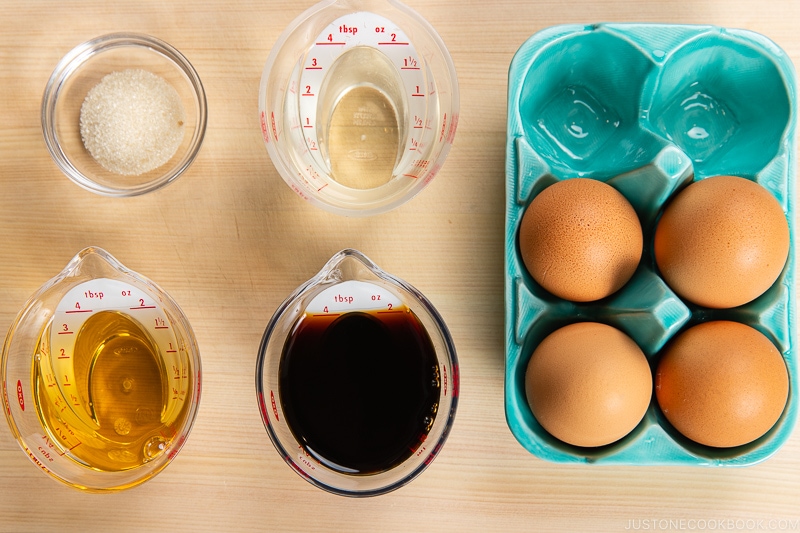
To Make the Marinade
- Combine ¼ cup soy sauce, ¼ cup mirin, ¼ cup sake, and 1 tsp sugar in a small saucepan.
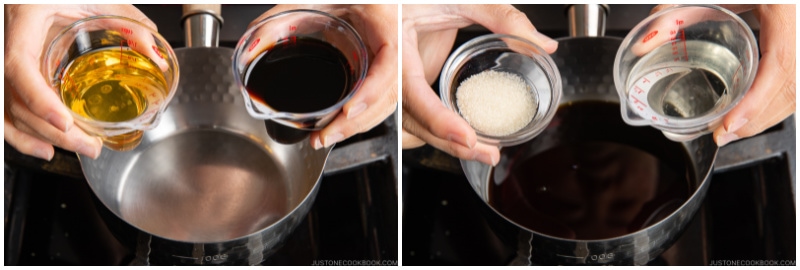
- Bring it to a boil, whisking it to dissolve the sugar completely. Once boiling, lower the heat and simmer for 1 minute. Turn off the heat. Set aside to cool completely.
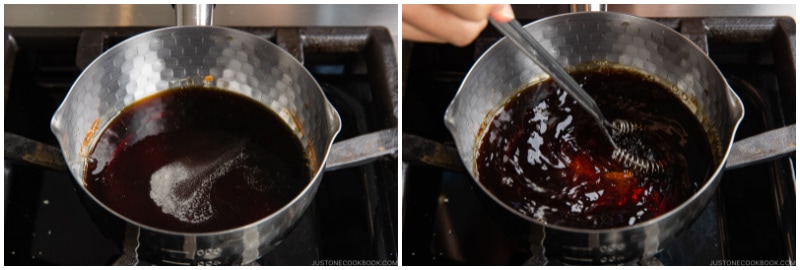
To Cook the Soft-Boiled Eggs
- Add 4 cups (1L) water to a medium saucepan or enough water to cover the eggs by at least 1 inch (2.5 cm). Bring the water to a full boil. Then, remove 4 large eggs (50 g each w/o shell) from the refrigerator. Carefully and gently lower one egg at a time into the boiling water with a mesh strainer/skimmer or a ladle. When you add the first egg, set a timer for 7 minutes. Optionally, you can cook them 6–6½ minutes for a runny egg yolk and 8–9 minutes for a custard-like egg yolk.
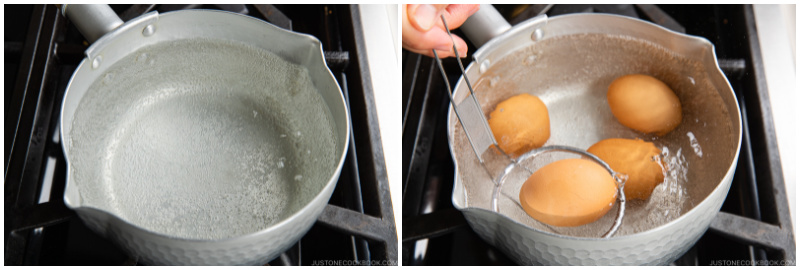
- Once all the eggs are in the saucepan, lower the heat to maintain a gentle boil. Keep the water simmering but not bubbling so strong that the eggs bounce around. During the first 3 minutes, gently rotate the eggs with chopsticks once in a while if you want to keep the egg yolks centered.
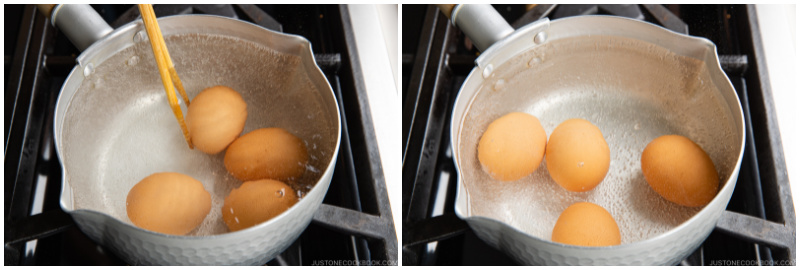
- After 7 minutes, immediately remove the eggs and shock them in a bowl of iced water to cool for 15 minutes.
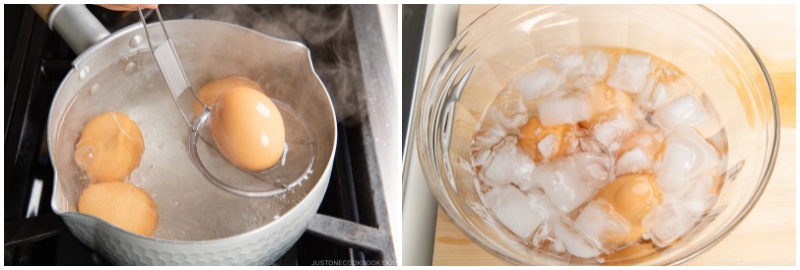
To Marinate the Eggs
- Once the eggs are completely cool, gently crack the shell at the wide bottom end of the egg and start peeling it vertically toward the pointy top. Dip the egg in the iced water a few times to help with the peeling. Once you peel one section vertically, the rest of the shell comes off easily.
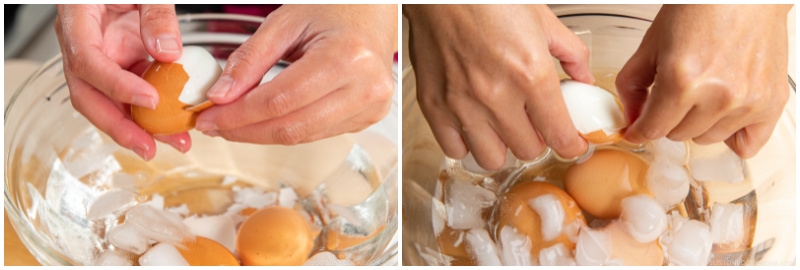
- Place the peeled eggs and marinade in a plastic bag. Why do I recommend a plastic bag? It allows us to use less marinade to keep the eggs submerged. We use this marinade only once for food safety reasons, so it’s most economical to prepare no more than what you need. If you use a container instead of a bag, it requires more marinade to submerge the eggs.
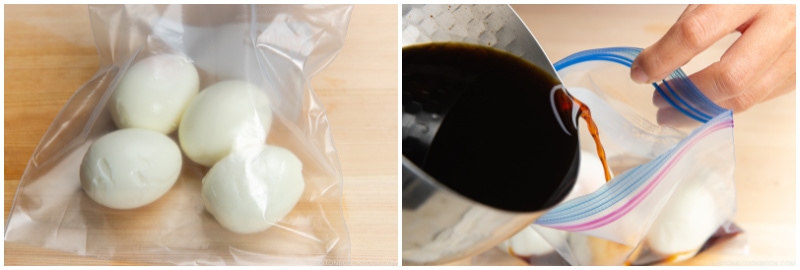
- Remove the air from the bag and use a clip or rubber band to seal it right above the eggs to keep them completely covered in marinade. Refrigerate for 8 hours or overnight. You can rotate the eggs occasionally if you like.
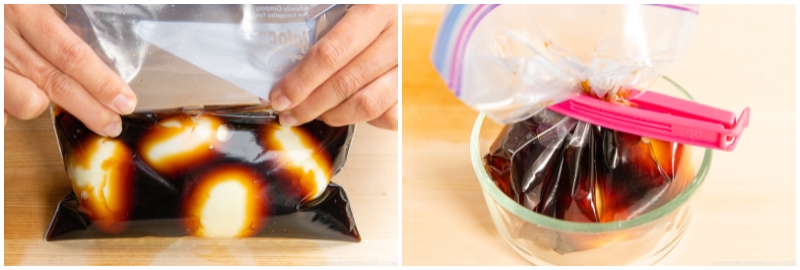
To Serve
- Remove the eggs from the marinade and cut them in half lengthwise. You can use a piece of string, fishing line, or cheese cutter (that‘s what I used here) to cut the eggs in half cleanly. Enjoy these Ramen Eggs in bento, as a ramen topping, or as a snack sliced in half and sprinkled with furikake (rice seasonings) and shichimi togarashi (Japanese seven spice). If you want to warm them, soak the bag in warm water to bring up the temperature faster.
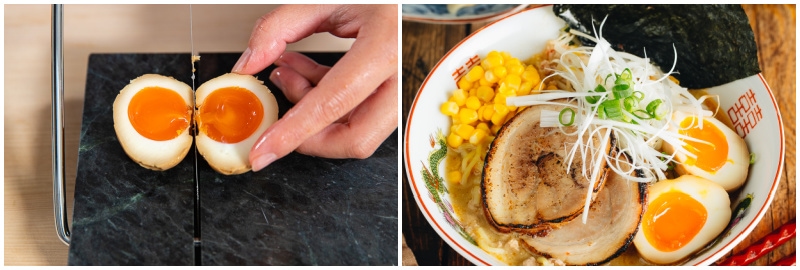
To Store
- Keep them refrigerated at all times. Do not freeze as their texture changes when frozen. They will get saltier the longer they marinate, so remove them from the marinade after 12–24 hours. Enjoy within 3–4 days if your eggs are soft-boiled and within a week if hard-boiled. For food safety reasons, I do not recommend reusing this marinade with new boiled eggs. You can repurpose this marinade as a seasoning sauce cooked with your stir-fried or simmered dishes, but use it soon.
Notes
Nutrition
Calories: 90kcal, Carbohydrates: 2g, Protein: 7g, Fat: 5g, Saturated Fat: 2g, Polyunsaturated Fat: 1g, Monounsaturated Fat: 2g, Trans Fat: 1g, Cholesterol: 186mg, Sodium: 311mg, Potassium: 70mg, Sugar: 2g, Vitamin A: 270IU, Calcium: 28mg, Iron: 1mg